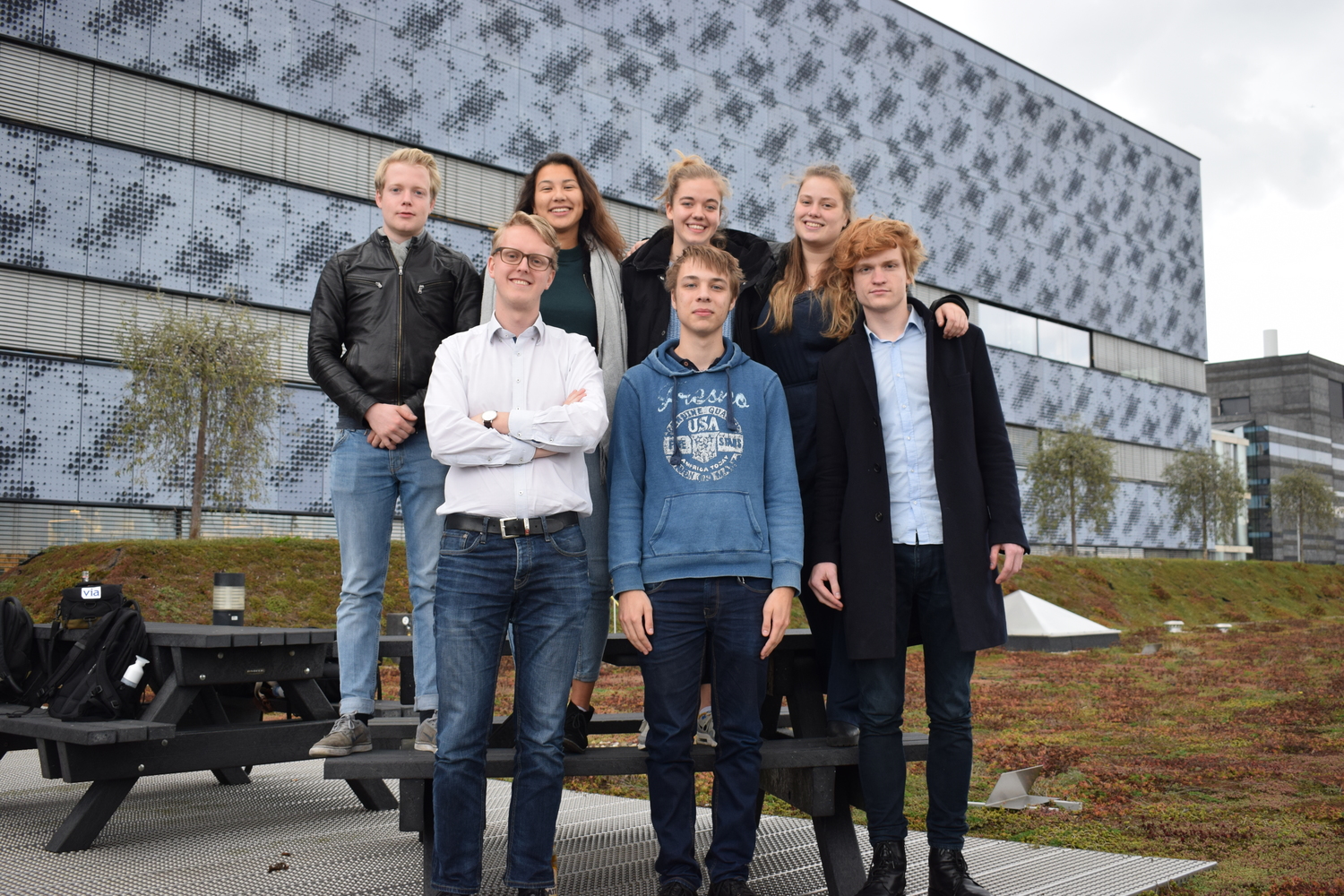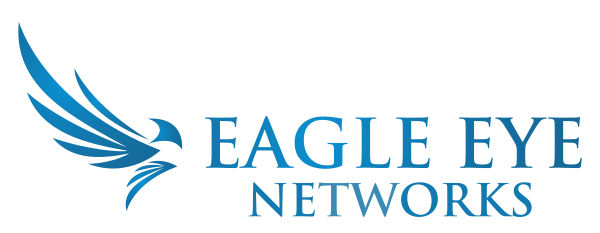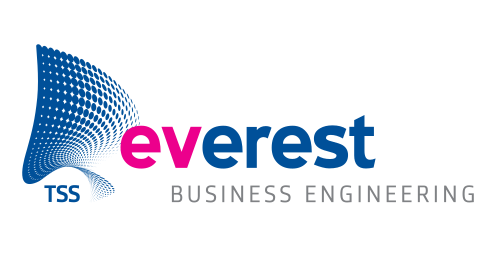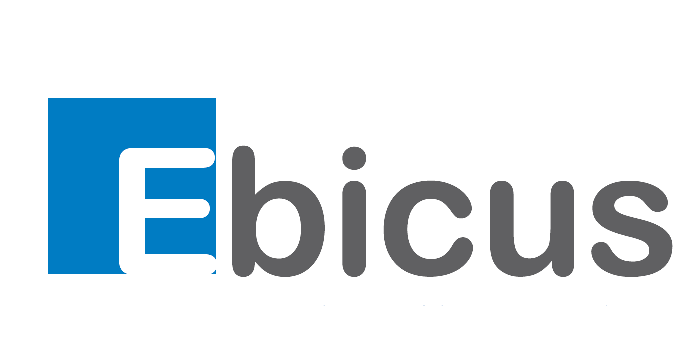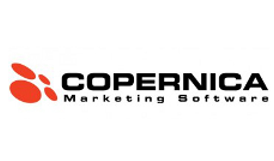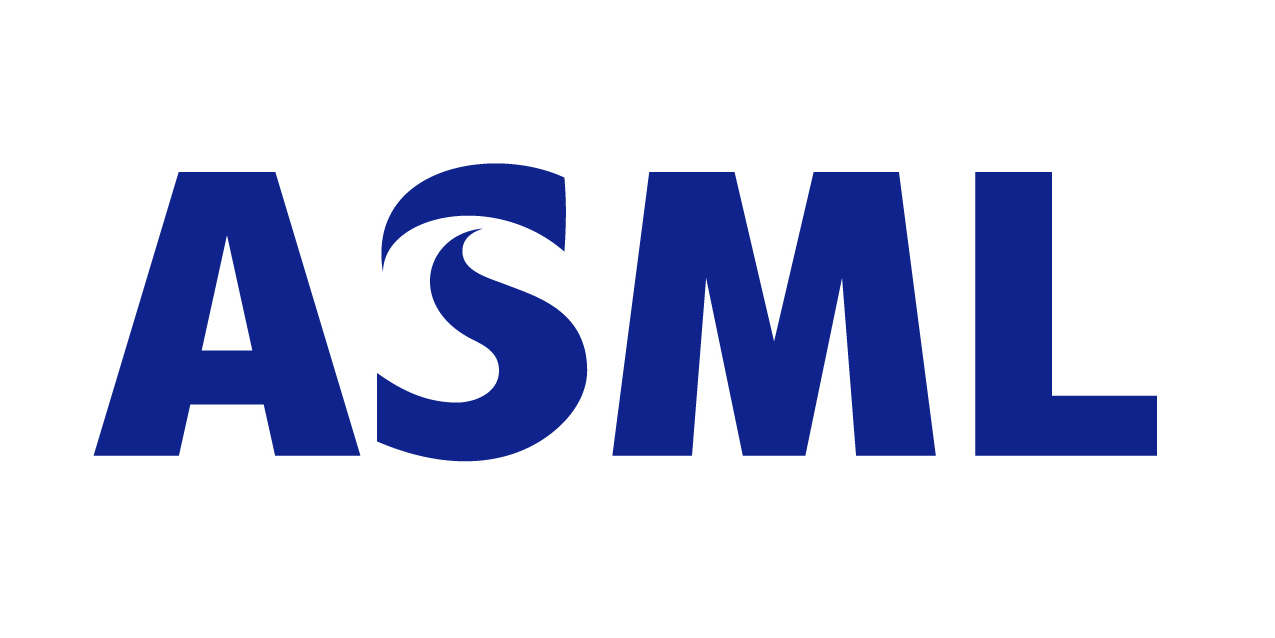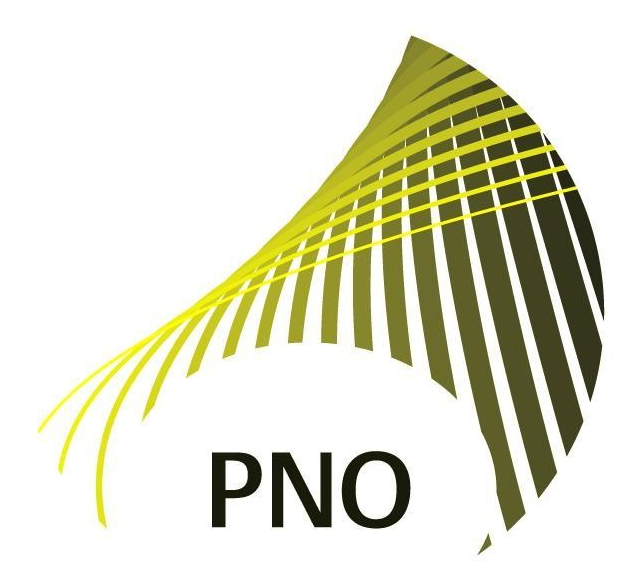
The eighth annual conference
6 April 2018
Het Sieraad, Postjesweg 1, Amsterdam
Thank you for joining Awesome IT 2018! We hope to see you again next year! For more information, stay tuned on the website or on the Facebook page of Awesome IT.
On the 6th of April 2018, the 8th edition of Awesome IT was held in Het Sieraad, Amsterdam.
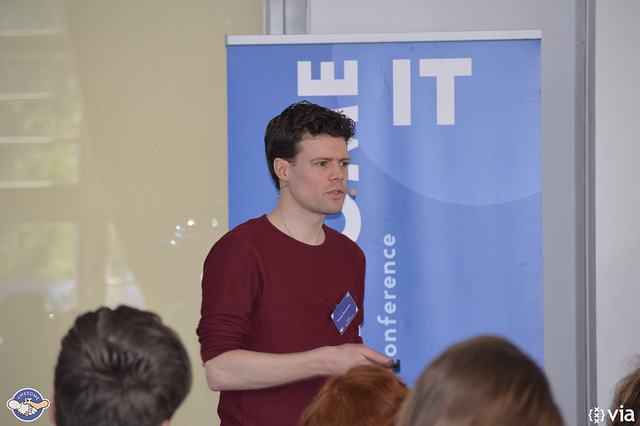
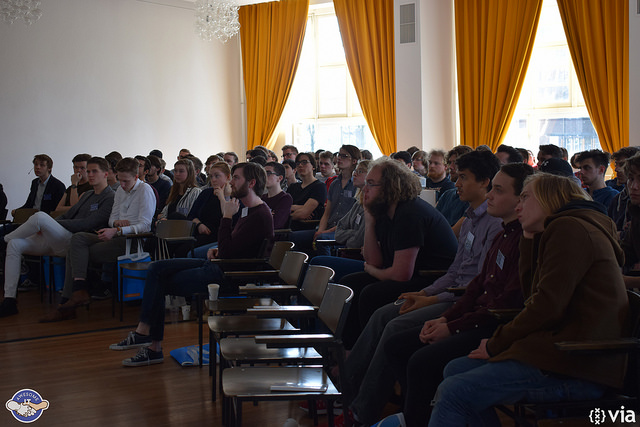
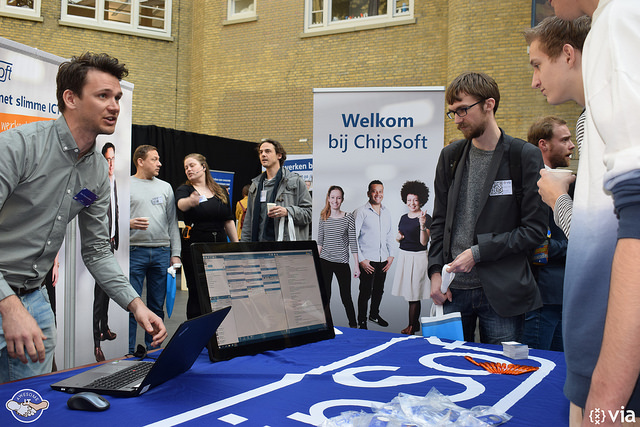
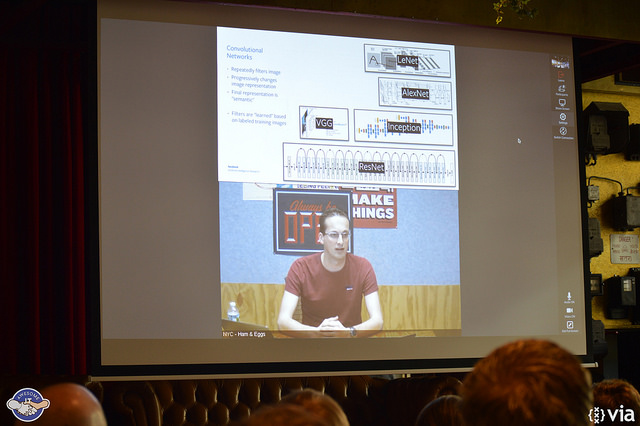
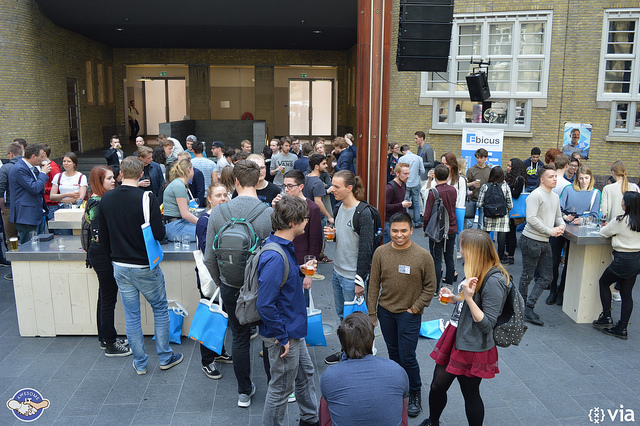
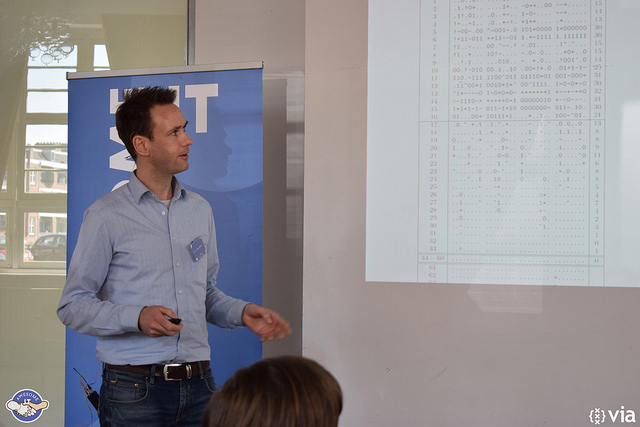
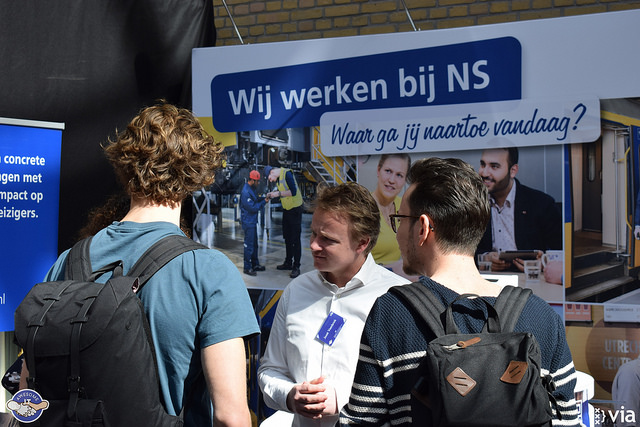
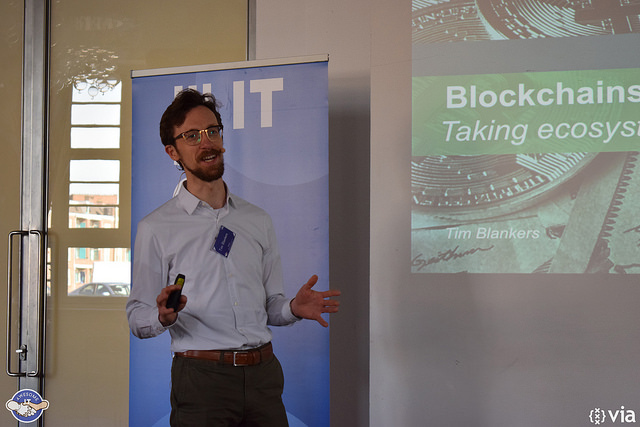
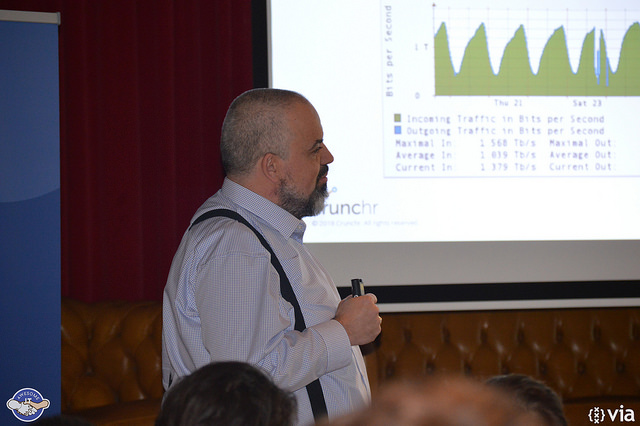
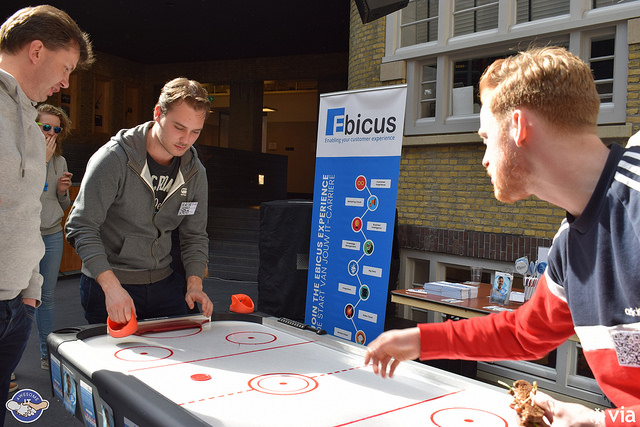
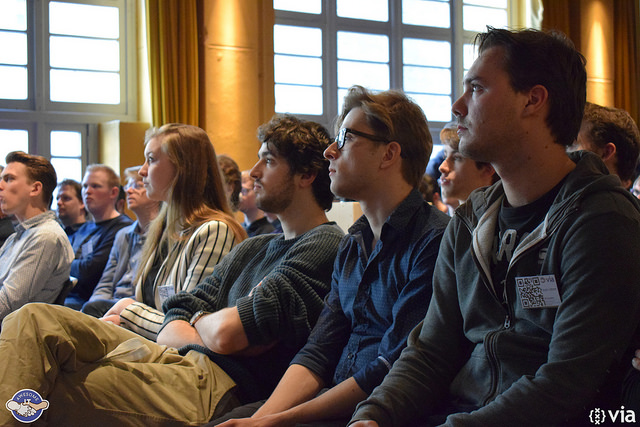
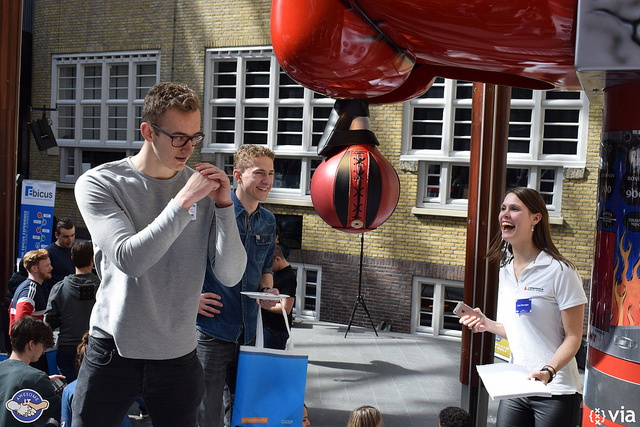
Speakers 2018
Click on a name on the left for more information about a speaker
Thomas Boeschoten
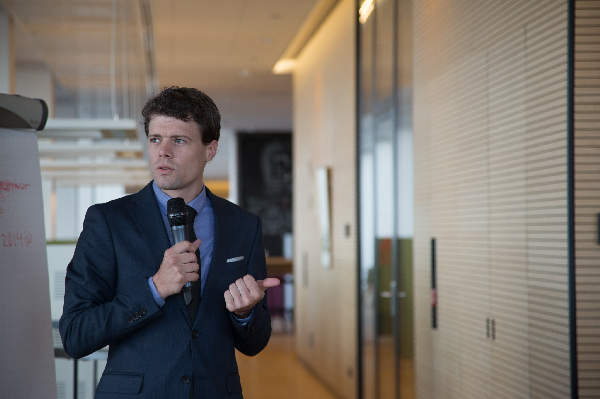
Thomas Boeschoten is founder of Utrecht Data School (Utrecht University) and data strategist at AD.nl.
Talk: Mapping the Dutch Twittersphere
What happens when you scrape all Dutch tweets? Where do Efteling-fans gather online? What are the communities that share most fake news stories? Thomas Boeschoten presents his mapping of tweeting behavior in the Netherlands. And for the nerds: he shares some insights and raises some questions about methodology too.
Dr. Laurens van der Maaten

Laurens van der Maaten is a Research Scientist at Facebook AI Research in New York, working on machine learning and computer vision. Before, he worked as an Assistant Professor at Delft University of Technology, as a post-doctoral researcher at UC San Diego, and as a Ph.D. student at Tilburg University. Laurens works on a variety of topics in machine learning and computer vision. Currently, he is working on embedding models, large-scale weakly supervised learning, visual reasoning, and cost-sensitive learning.
Talk: From Visual Recognition to Visual Understanding
This talk gives an overview of some of our recent work on models for visual recognition and visual understanding. The first part of the talk presents a new visual recognition model, called DenseNet. DenseNets change the common connectivity pattern of convolutional networks by using the activations from all prior layers as input into a layer. It also presents an extension, called multi-scale DenseNet, that has the ability to adapt dynamically to computational resource limits at inference time. Specifically, our architecture spends less computation on “easy” images, and uses the surplus computation to obtain higher accuracy on “hard” images. The second half of the talk presents our work on moving from visual recognition to visual understanding, focusing on a problem setting known as visual question answering. It discusses the problems of biases in current visual question answering benchmarks and presents a new benchmark, called CLEVR, that aims to overcome these problems. We use CLEVR to study a new type of deep models that aims to model the reasoning processes required to answer questions more explicitly than standard models.
Dr. Jeroen van der Laak
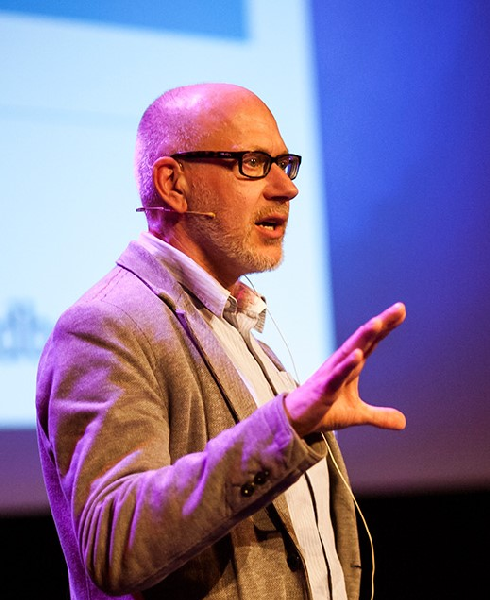
Jeroen van der Laak is associate professor in computational Pathology at the Department of Pathology of the Radboud University Medical Center in Nijmegen, The Netherlands. His research group investigates the use of deep learning based analysis of whole slide images for different applications: improvement of routine pathology diagnostics, objective quantification of immunohistochemical markers, and study of novel imaging biomarkers for prognostics. Dr van der Laak has an MSc in computer science and acquired his PhD from the Radboud University in Nijmegen. He co-authored over 85 peer-reviewed publications and is member of the editorial boards of Laboratory Investigation and the Journal of Pathology Informatics. He is member of the board of directors of the Digital Pathology Association and organizer of sessions at the European Congress of Pathology and the Pathology Visions conference. He coordinated the highly successful CAMELYON grand challenges in 2016 and 2017. Dr van der Laak acquired research grants from the European Union and the Dutch Cancer Society, among others. He is frequently invited as a speaker at international conferences.
Talk: Deep learning for cancer diagnostics in pathology
Deep learning is a pattern recognition technique that has been proven to be very powerful for analysis of digitized histopathological slides. In our research we study different applications of this technique for improved diagnostics and prognostics of cancer patients. In this talk I will show typical examples of the application of deep learning, highlight specific opportunities and challenges and show the state-of-the-art.
Erno Doorenspleet
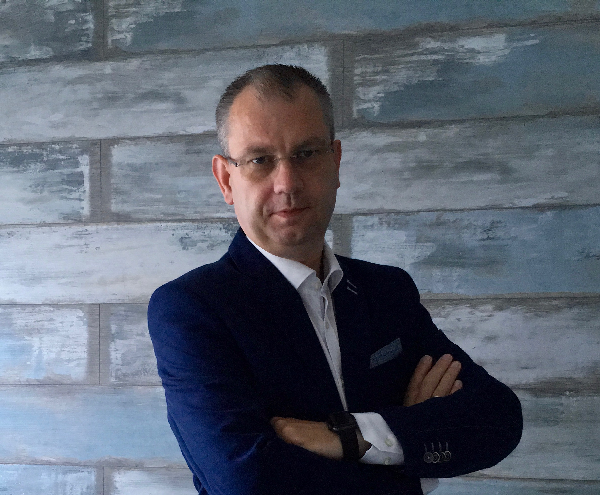
Erno Doorenspleet is part of IBM Security X-Force threat inteligence team. He is an Global Executive Security Advisor and Security CTO IBM Netherlands. Erno has more than 20 years of experience in IT, covering Security & Risk Management, Governance & Operations and Outsourcing. He is a national and international speaker on the relationship of Cyber Security, Information Technology, Cloud computing and Internet of Things, and has had articles published on these topics.
Talk: Modern Cyber Security
What are the latest trends in Cyber Security. What is out there and what new malware types do we see emerging. There are also new technologies like AI. Cognitive security uses intelligent technologies like machine learning and natural language processing to mimic the way the human brain functions. It gets stronger over time, learning with each interaction and getting better at proactively stopping threats. The result: Security analysts, armed with this collective knowledge and instinct, can respond to threats with greater confidence and speed. But what should you do when there is a breach. Do you know how to reach, do you understand the steps or is there panic? In this session, you will get a better understanding on all of these aspects of Cyber Security.
Dr. Jan Joris Vereijken
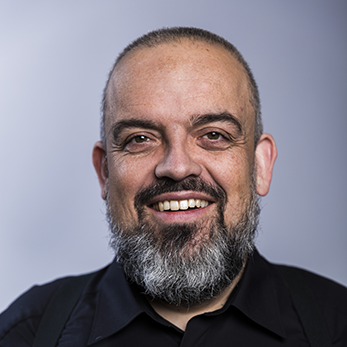
Jan Joris is the Chief Architect of people analytics scale-up Crunchr, where he is responsible for security and scalability. Before that, he was as Chief Security Architect of ING Bank for over six years responsible for ING's global security architecture and fraud maturity. His passion to explain complex stuff in simple words brings him to speak regularly at international conferences, give yearly guest lectures at several Dutch universities, and generally help people from shop floor to board room understand what the heck is happening in IT security.
Talk: Blown away: DDoS in perspective
Distributed Denial-of-Service ("DDoS") attacks are too often approached as a purely technical issue: a site is blown to smithereens by a huge amount of traffic. This myopic way of looking is counter-productive. Let's look at DDoS from many different angles: the attacker, the defender, the victim, the bystanders, the lawmakers, and society at large. Slowly we'll put this phenomenon into perspective, and draw up the big picture of what DDoS is all about.
Dr. Paola Grosso
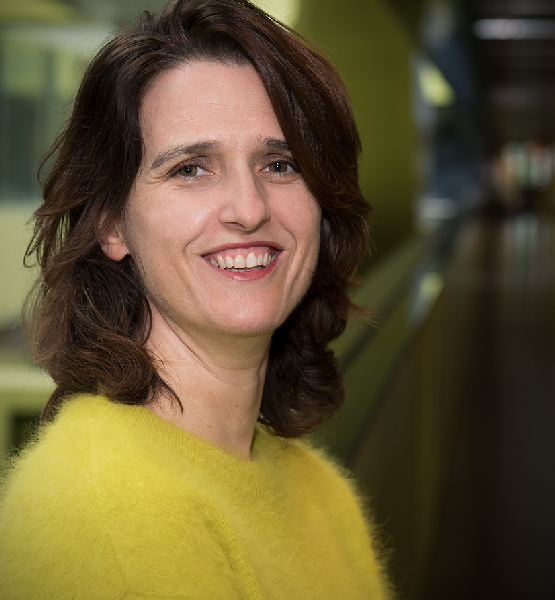
I am a computer scientist, with a passion for everything networking. I am leading the activities of the Multi Scale Networking group. I research the emerging architectures that can support the operations of the future Internet. In particular I focus on the delivery of secure and sustainable network services across multiple domains, one of the major challenges in networking. Device programmability and virtualization play in this field an ever increasing role in designing networks. My research tackles the new questions that emerge from studying the interplay of these novel capabilities.
Talk: Autonomous computer networks: how and why?
Current advances in designing and engineering computer networks offer a path toward autonomous networks. An key element toward this behavior is network programmability. Autonomous networks can react to external events, such as security incidents, and efficiently change their topology and bahavior to counteract such events. In this talk I will present the research challenges and opportunities in this area, and I will ground the results in the context of the SARNET project (sarnet.uvalight.net).
Tim Blankers
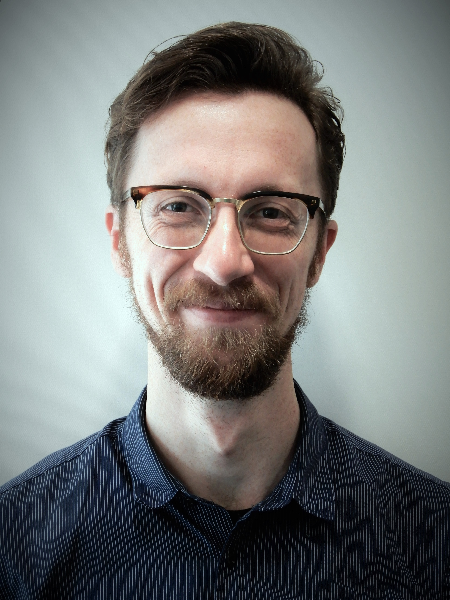
Tim Blankers studied Computer Science at the VU, joined ABN AMRO to develop blockchain ecosystems, and now continues his work there as an Enterprise Architect. He has a passion for technology, sailing, languages, and food.
Talk: Blockchains: taking ecosystems to the moon
The financial sector is facing numerous exciting challenges. In a world where security and trust is essential, how does ABN AMRO take its business to the next level? Blockchain technology could play an important role in designing highly efficient ecosystems, but decentralization is not trivial. Let’s talk about blockchains and the cool things you can do with them.
Dr. Wiro Niessen
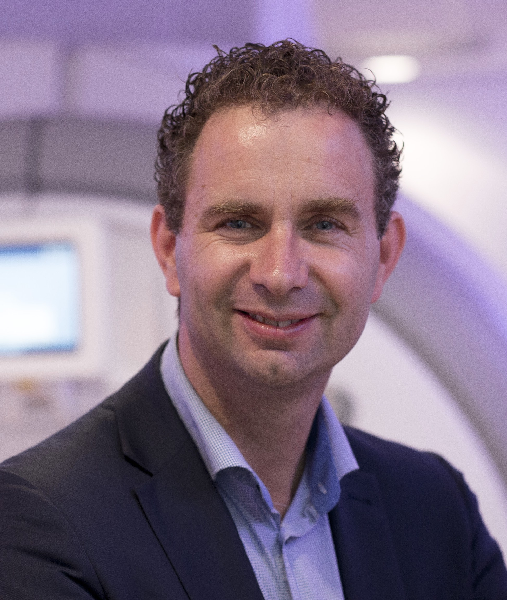
Wiro Niessen earned his PhD in Medical Image Analysis from Utrecht University in 1997. Subsequently, he became a Professor of Biomedical Image Analysis at Erasmus MC and at the Faculty of Applied Sciences at TU Delft. He was a member of the Young Academy of The Royal Netherlands Academy of Arts and Sciences (KNAW) from 2005 to 2010. He heads the Biomedical Image Analysis Platform of the European Organization for Imaging Research and he is Fellow and Executive Director of the Medical Image Computing and Computer Assisted Intervention Society. In 2012, he launched the Erasmus MC spin-off company Quantib, of which he is currently Scientific Director.
Talk: Biomedical Imaging and Genetic (BIG) Data and Artificial Intelligence in Dementia Research
Big data are dramatically increasing the possibilities for prevention, cure and care, and changing the landscape of the healthcare system. In this presentation I will show examples of possible large benefits of big data analytics in dementia. With the ageing society, there is an urgent need to develop new preventive and therapeutic strategies for common age-related diseases, such as Alzheimer’s disease, the most common form of dementia. Neuroimaging plays an increasingly important role here, as it helps in understanding disease etiology and diagnosing different forms of dementia. In this presentation I will show how large scale data analytics in longitudinal population neuroimaging studies, especially when combining imaging with other clinical, biomedical and genetic data, provides a unique angle to study the brain, both in normal ageing and disease. I will also show how it can be the basis of new methods for disease detection, diagnosis, and prognosis in clinical practice. I will also discuss some of the promises and challenges of using deep learning in the field of image analysis and imaging genetics in dementia.
Prof. Lokke Moerel
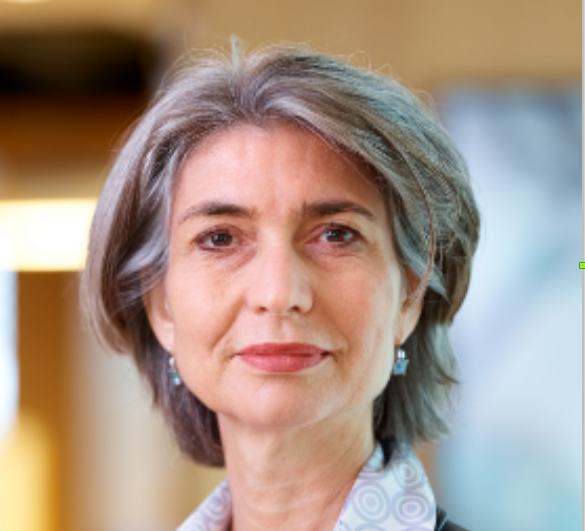
Among the world’s best-known privacy lawyers, Lokke Moerel specializes in data protection, e-commerce & cyber security law. “An authority on data protection matters” (Chambers Europe 2014), Ms. Moerel is consistently ranked as a leader in data protection law in Chambers Global and Legal 500. As the former remarked, she “has a formidable reputation in the field of data protection, advising numerous blue-chip clients. She is doing market-leading work.”
Talk: Big data profiling and AI: beyond compliance
The key-note will address Big Data analytics and applying machine learning algorithms (artificial intelligence, AI). Although the European General Data Protection Regulation (coming into force in May 2018) does not provide for compliance requirements specific to applying machine learning algorithms, the combined requirements of the GDPR suggest that machine learning algorithms need to be designed, developed and applied in a transparent, predictable and verifiable manner (‘Algorithmic Accountability’). Lokke will explain the concept of Algorithmic Accountability, and how to achieve this in practice. Whether big data initiatives are accepted by users and generate revenues, however, depends ultimately on ethical considerations rather than just legal compliance. Lokke will explore the ethical rules in play and how to deploy these to ensure AI applications can obtain societal acceptance.
Gerhard van der Bijl & Jop Gerritsen
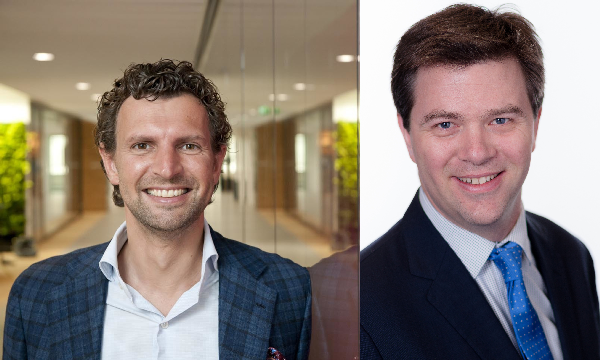
Gerhard van der Bijl currently works as Chief Digital Officer at Royal FloraHolland and Jop Gerritsen is an Associate Partner at McKinsey & Company.
Talk: Innovating the flower auction at Royal FloraHolland
Royal FloraHolland finds itself on a crossroads. Having established the world’s largest trading institute for horticulture, it is currently being challenged. The relevance of its main service “auctioning” is going down, and is replaced by different forms of direct trade. The trade is getting more fragmented, and thereby unmanageable and unfavorable for the suppliers. Yet, the technologies and processes currently used are not supporting sufficiently these development, and are not stimulating the right innovation for its members and their customers. Therefore, Royal FloraHolland has set out a courageous and challenging goal to innovate and shake up the sector through a modern, two sided B2B digital marketplace. The platform uses latest technologies used in business such as microservices and API based architectures, journey experience design, and machine learning techniques like deep neural networks. By using innovative partnerships, and creating an open ecosystem platform, the sector will be able to cut inefficiencies drastically and benefit from a larger scale marketplace. In our speech, we will describe our journey and some of the technologies we use, to digitize the company and the sector.
Dr. ir. Marc Stevens
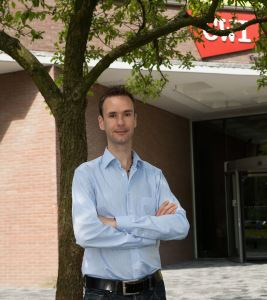
Marc Stevens is a tenured researcher at the Cryptology Group at Centrum Wiskunde & Informatica in Amsterdam. He obtained his PhD in 2012 from the Mathematical Institute, Leiden University, for which he was awarded the KHMW (The Royal Holland Society of Sciences) Martinus van Marum prize. He is an expert in cryptanalysis, with emphasis on practical attacks on MD5 and SHA-1. Research highlights are the construction of the MD5 'rogue' Certification Authority (CRYPTO'09 Best Paper Award), the invention of counter-cryptanalysis and the reconstruction of the cryptanalytic attack in the supermalware Flame (CRYPTO'13 Best Young Researcher Paper Award), and the achievement of the first collision for full SHA-1 (CRYPTO'17 Best Paper Award & 2017 Pwnie Award for best cryptologic attack).
Talk: Breaking SHA-1
The cryptographic hash function SHA-1 is an important industry standard used for various applications such as digital signatures, file deduplication and Git. The security of many applications depends on that it is infeasible to find hash collisions, i.e. two files with the same hash. In 2017 we were the first to find a collision for SHA-1 which concluded one of the famous code-breaking sagas from this decade. In this talk I will discuss the various technical challenges that we had to overcome to construct this SHA-1 collision as well as to make it a meaningful PDF file pair. Joint work with Ange Albertini, Elie Bursztein, Pierre Karpman and Yarik Markov.
John Sinteur
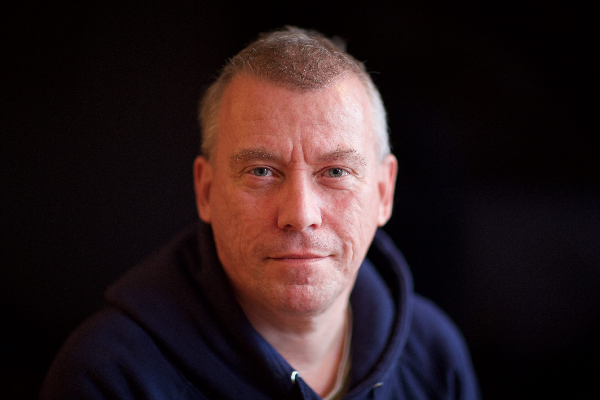
Started out in multi-media in the early nineties with some of the first online stores in the Netherlands, the first online supermarket in the Netherlands, and too many CD-ROM projects to count. Moved to KPN for a few years to do the kpn.com architecture, before starting his own company. iPhone apps, Android apps, making a Raspberry Pi check the acidity of a swimming pool whilst receiving airplane locations, and working on medication safety for electronic prescriptions, everything is fair game. Security isn’t a separate subject - it is part of everything.
Talk: The Future of Cybersecurity
Making predictions is difficult, especially when it’s about the future. John Sinteur, co-founder of Radically Open Security, is going to try anyway, and talk about where Cyber security is going. From business models to technical details, from the future of ethical hacking to the impact of laws and regulations, from script kiddies to nation-state weaponisation.
Speeddating
Next to all the exciting speeches, there will be a chance to be heard and see what the future has in stake for you. In just 30 minutes of your time, you will get to “date” with several interesting companies, and talk about what you can do for them and what they can do for you. Even if you do not know yet what you want or simply want to get some more information about the companies, it's well worth your time. So don't forget to register for speeddating and get the full experience of Awesome IT!
Program
Minsky room |
Dijkstra room |
Van Rossum room |
|
|---|---|---|---|
| 10:00 |
Central openingLokke Moerel10:00 - 11:00Big data profiling and AI: beyond compliance |
||
| 10:15 | |||
| 10:30 | |||
| 10:45 | |||
| 11:00 | Short break11:00 - 11:15 |
||
| 11:15 |
Jan Joris Vereijken11:15 - 12:15Blown away: DDoS in perspective |
Tim Blankers11:15 - 12:15Blockchains: taking ecosystems to the moon |
Paola Grosso11:15 - 12:15Autonomous computer networks: how and why? |
| 11:30 | |||
| 11:45 | |||
| 12:00 | |||
| 12:15 | Lunch break12:15 - 13:15 |
||
| 12:30 | |||
| 12:45 | |||
| 13:00 | |||
| 13:15 |
Erno Doorenspleet13:15 - 14:15Modern Cyber Security |
Thomas Boeschoten13:15 - 14:15Mapping the Dutch Twittersphere |
Jeroen van der Laak13:15 - 14:15Deep learning for cancer diagnostics in pathology |
| 13:30 | |||
| 13:45 | |||
| 14:00 | |||
| 14:15 |
Laurens van der Maaten14:15 - 15:15From Visual Recognition to Visual Understanding |
Marc Stevens14:15 - 15:15Breaking SHA-1 |
John Sinteur14:15 - 15:15The Future of Cybersecurity |
| 14:30 | |||
| 14:45 | |||
| 15:00 | |||
| 15:15 | Small break15:15 - 15:30 |
||
| 15:30 |
Gerhard van der Bijl & Jop Gerritsen15:30 - 16:30Innovating the flower auction at Royal FloraHolland |
Wiro Niessen15:30 - 16:30Biomedical Imaging and Genetic (BIG) Data and Artificial Intelligence in Dementia Research |
|
| 15:45 | |||
| 16:00 | |||
| 16:15 | |||
Drinks |
Organisation
